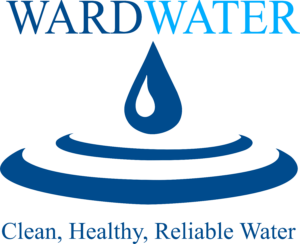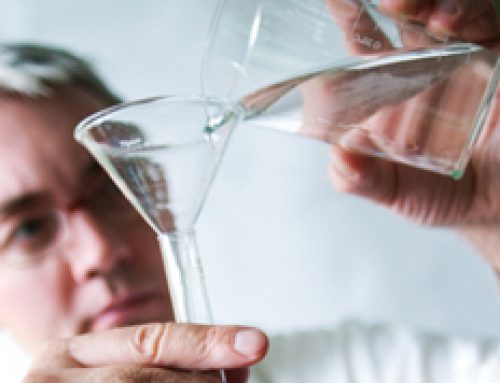 Requesting bacteria water testing, when buying or selling a home, is a fairly standard practice in today’s real estate world. Making sure your family’s water is safe from the harmful effects of bacteria, such as Ecoli or Coliform bacteria, is just good common sense.
Requesting bacteria water testing, when buying or selling a home, is a fairly standard practice in today’s real estate world. Making sure your family’s water is safe from the harmful effects of bacteria, such as Ecoli or Coliform bacteria, is just good common sense.
If your water has tested positive for persistent bacteria, there’s really no need to hit the panic button too quickly.
In this article we’ll take a look at one of the simplest, healthiest, lowest maintenance and most cost effective ways of ridding your home’s water of bacteria…permanently.
Bacteria | My Test Came Back Positive?
Bacteria readings on a home’s well water test don’t necessarily have to be a scary thing.
A lot of factors can cause a well’s drinking water to come back with a positive reading. Anything from “false positives” (often caused from improper testing at the tap), to a home sitting unused for an extended period of time, can result in a reading that suggests your home’s well has an issue with bacteria contamination.
If you have gone through the typical procedures of disinfecting (temporarily chlorinating) your well, and have verified that the proper re-testing steps have taken place, but you’re still getting positive bacteria readings…you may in fact have a persistent problem with bacteria in your well.
It may be time to start looking at a permanent option for bacteria purification.
Bacteria Purification Systems
In today’s world of water treatment options, there are currently 2 tried and true methods for making sure a home’s well water is safe from the health effects of bacteria contamination…Chlorination Treatment Systems and Ultraviolet Purification Systems.
Let’s take quick and simple look at both treatment methods, how they work and how they fit in with the typical family’s lifestyle and budget.
1. Chlorination Treatment
Chlorination Treatment Systems are a very reliable method of making sure the bacteria in a home’s well water supply has been properly killed before it has a chance to enter its drinking water. Local municipalities that supply public water to their residents have been using this process for eons.
The method has also been used as a “whole house” treatment method for homes with private wells for about as long as the water treatment profession has been in business.
Residential chlorination systems are fairly simple in principle. They are generally made up of 3 components:
- A chlorine injection unit (this supplies the needed chlorine dosage).
- A retention tank (allows the bacteria-ridden water time to sit and be disinfected by the chlorine).
- A carbon filtration filter (removes any potentially harmful residual chlorine or chlorine tastes & odors).
Immediately after water is pumped out of the well and goes into the home’s pressure tank unit, water enters a separate “retention tank” unit. A system, called an injection unit, then supplies the proper dose of needed chlorine which is injected into the retention tank and mixes with the new supply of well water. After the water has had time to sit and has been disinfected it then travels through a final filtration tank that is filled with carbon material. The carbon absorbs any remaining residual chlorine which is removed from the water before it travels on throughout the home, now ready to be used by the homeowners.
The Pros
Chlorination is extremely effective at at killing well water bacteria. Simply put, it works and it is no doubt a proven technology. It can also be extremely helpful when used as a means of helping to remove many of the other undesirable things a private well can produce.
The Cons
The downside to chlorination treatment systems is that in many cases they can be somewhat costly and cumbersome, both to install and to maintain.
Up front costs for a professionally installed chlorination system can easily exceed the $3k mark. Carbon filter tanks need to be routinely changed out – on average every 2-5 years, in most homes. Cost for these change-outs can be as much as $500-$600, depending on the size of the unit and quality of the carbon material used. The homeowner is also responsible for making sure chlorine solution is mixed and added to the injection unit – on average every 2-3 weeks.
Apologies if it sounds as though we are downplaying the viability of chlorination as a desirable bacteria treatment method. In fact we are not. These systems can be a great option when it comes to trying to kill more than one bird with a single stone, so to speak. Often times these units are wonderful at assisting in the treatment of other harmful and non harmful contaminants from a home’s water – Arsenic, Iron and Manganese just to mention a few.
Like any other treatment method it really depends on what else is in your water!
Ultraviolet purification systems (more commonly referred to as UV systems) for many years now, have been the go-to technology for keeping homes safe from persistent bacteria contamination.
In a nutshell, these system use ultraviolet light to kill bacteria and viruses from a home’s drinking water supply.
When well water first enters a home it travels through a long cylindrical looking device that houses an ultraviolet light bulb, which has been appropriately sized for the home’s water consumption and daily needs. As the water passes by the rays given off from the UV bulb, any harmful bacteria or viruses are killed, long before they have a chance to travel onward into the home’s usable water supply.
 For the most part, that’s really all there is to these systems. And they are incredibly good at what they do!
For the most part, that’s really all there is to these systems. And they are incredibly good at what they do!
In reality, these are extremely simple and effective systems. As treatment professionals, they are in most cases our preferred method of treatment for the vast majority of the customers we work with (pending other possible issues their water may have).
The Pros
Up front Cost. UV Systems on average cost approximately half what it costs to install a complete chlorine injection system. A high quality, professionally installed UV system, should run somewhere in the $1500-$1600 range for most homes.
Simplicity. There are no Carbon tank replacements to worry about with these systems. You also don’t have to worry about adding chlorine solution to an injection tank every 2-3 weeks, like with chlorination injection systems.
Bulbs do require replacement on average 1x per year for most systems. This, depending on whether or not you hire a professional to perform the service and the type of system you purchase should range anywhere between $50 and $175.
In terms of being the lowest maintenance form of bacteria purification, UV systems definitely have the market cornered.
The Cons
You need clean water. Any water entering a UV system needs to be relatively clean and as free of contaminants as possible. Common well water contaminants like Iron, Manganese or turbidity can greatly reduce a UV system’s ability to kill bacteria.
Bacteria and virus are really good at playing hide & seek! Because of their minuscule size, these contaminants can easily hide behind many other particles found in a well water supply. As they enter the home, they can literally hide, virtually undetected, behind a particle of Iron or Manganese as they go past the UV rays designed to kill the bacteria. Once that happens, they are out of sight form the UV rays and now on their way into the home. Next stop…drinking water.
If a home has fairly high levels of well water particles, a pre-treatment softening system or self back-washing filter may be required to make sure the UV system will function properly-although in many homes this step can be avoided.
Depending on the level of other contaminants in the water, in most cases, the fix for this problem is quite simple and affordable.

Using a whole house cartridge filter with replaceable filters, just before the UV system, will do the trick quite nicely (a step we take with each and every UV system we install).
The homeowner will just need to check the filter periodically to make sure it remains clear from particles. In most homes the cartridges will need to be changed out on average every 2-3 months (sometimes less frequently, sometimes more frequently). If the cartridge filter unit has been installed properly, the average homeowner can do this step themselves in just a matter of a couple minutes.
The Takeaway
So, in summary, if you are concerned that there may be bacteria in you’re drinking water, here are a few basic steps we recommend taking toward fixing the problem:
- If you have yet to do so, when you test for bacteria, make sure to request a “numeric” bacteria count-not simply a “present or absent” count. This may help your treatment professional in determining if you actually have bacteria in your well or if it’s possible that you have experienced a false read (something that a very low numeric bacteria reading can sometimes be an indicator for).
- Do a complete water test. Most often this test is referred to as a “Mortgage Water Test.” Specifically you will want to determine if there are any other contaminants in your water, such as Iron or Manganese, that might interfere with an installed UV system.
- Do your homework! Start speaking with the reputable water treatment professionals in your area to get their thoughts and advise. Most importantly, this step will hopefully give you a better feel for which company(s) will have your family’s best interest at heart, and not just their own business interests.
Photo Attributes:
httpwww.flickr.comphotosfdecomite6258227910sizeslinphotostream
httpcommons.wikimedia.orgwikiFileUV_pool_steriliser.JPG
httpwww.ultraviolet.compdflib981034.pdf
httpcommons.wikimedia.orgwikiFileWasserfilter_mit_Aktivkohle-Filterpatrone.JPG






